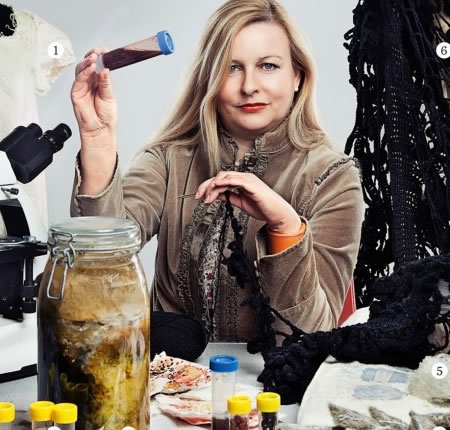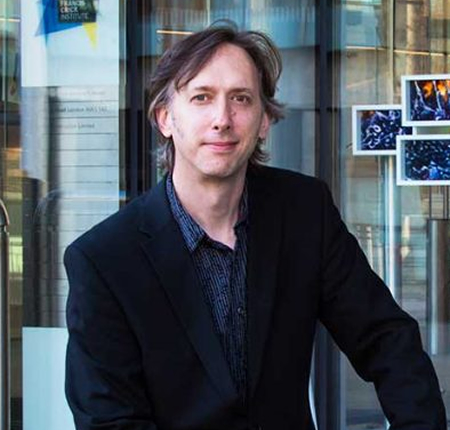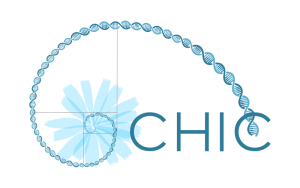Artists Residency
ANNA DUMITRIU & ALEX MAY
Dr. Anna Dumitriu is a British artist who works with BioArt, sculpture, installation, and digital media to explore our relationship to infectious diseases, synthetic biology and robotics. Dumitriu is a renowned speaker and has presented her work at venues including TATE Modern, Princeton University, Imperial College, La Musee de la Chasse et de la Nature, Mendel Museum and UCLA. Her work is featured in many books. Such as “Bio Art: Altered Realities” published by Thames and Hudson in 2016. And many other significant publications across contemporary art and science. Including Artforum International Magazine, Leonardo Journal, The Art Newspaper, Art Quarterly, Nature and The Lancet. Dumitriu’s work has a strong focus on the ethical implications of emerging technologies. Drawing threads across time, exploring future scenarios by reflecting on the past.
Alex May is a British artist creating digital technologies to challenge and augment physical and emotional human boundaries on a personal and societal level in a hyper-connected, software mediated, politically and environmentally unstable world. May works with light, code, and time; notably algorithmic photography, robotic artworks, video projection mapping installations, interactive and generative works, video sculpture, performance, and video art.
Selected artwork: Biotechnology from the Blue Flower
Overview:
Anna Dumitriu and Alex May’s work will emerge through their residency process embedded within the research of the CHIC Programme. It will be created through a dialogue with the researchers and inspired by the latest research in the field which focusses on New Plant Breeding Techniques for chicory as a multipurpose crop for the production of terpenes and inulin for human health applications.
- Creating a new sculptural bio-digital installation which can exist across both real and virtual spaces.
- Based on the exploration of chicory plant research.
Biotechnology from the Blue Flower project:
The artists will create a new sculptural bio-digital installation which can exist across both real and virtual spaces. It will be based on an exploration of chicory plant research. The artists will focus on the areas of the use of chicory for dietary fibre and its impact on human health and the human microbiome, and we will explore the uses of inulin and medicinal terpenes extracted from chicory.
They will work with the plants themselves: the roots, chicory flour and chicory inulin and terpenes, as well as other potential materials we might discover. Both artists have extensive experience in working with biological media including medicines and genetically modified materials and therefore have a good understanding of health and safety, ethical and biocontainment issues.
These sculptural, physical materials will be fused with video footage from the laboratory and data visualisations derived from the research processed through 3D scanning and modelling techniques (using Blender) to create a dramatic interactive artwork that we envisage will be brought to life using digital technologies such as video-mapping and sensor technology to create an exciting and affecting gallery or museum installation.
Their 3D scanning and modelling techniques may also be used to generate either augmented reality (AR) experiences or virtual reality (VR) 3D video content accessible via low-cost cardboard VR headsets and Smartphones with uploaded to YouTube.
Their aim is to reach out to large audiences and provide a wide and exciting range of potential ways they can interact with their work across arts, science and online settings, for example an AR experience that can be triggered by a paper models that can be printed and made at home.
The artists are keen to explore the morphology of the chicory plants in the work as well as the history and cultural impacts of the plants throughout history, for example as an ancient remedy or a coffee additive in times of crisis, and then draw a thread between those histories and cutting edge contemporary research in the field and the potential future benefits of working with techniques such as CRISPR to provide healthcare and food benefits. They have substantial previous experience in this area having both developed artworks individually in this area.
The final artwork would also be accompanied by a participatory drop-in workshop activity using materials and techniques to create a forum for dialogue and discussion, as well as an events programme



 This project has received funding from the EU Horizon 2020 research & innovation programme under grant agreement N. 760891.
This project has received funding from the EU Horizon 2020 research & innovation programme under grant agreement N. 760891.